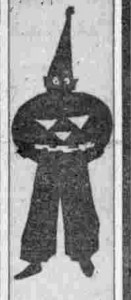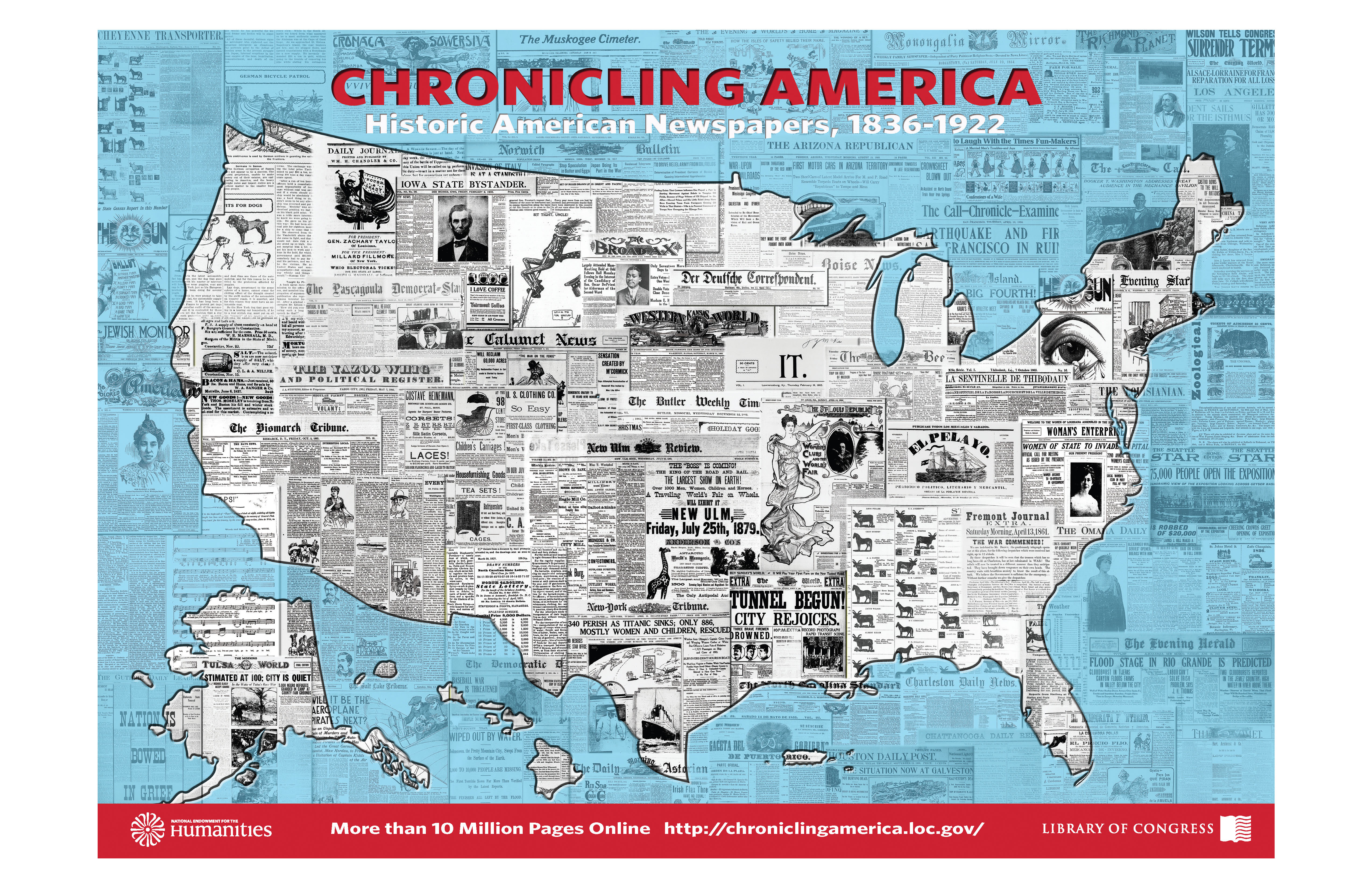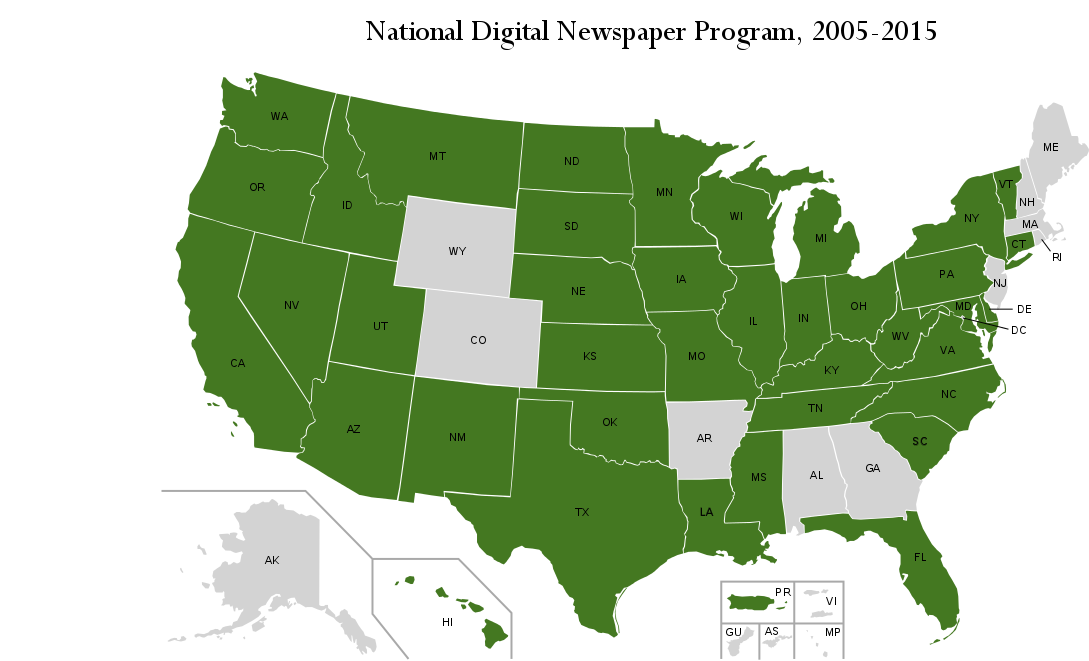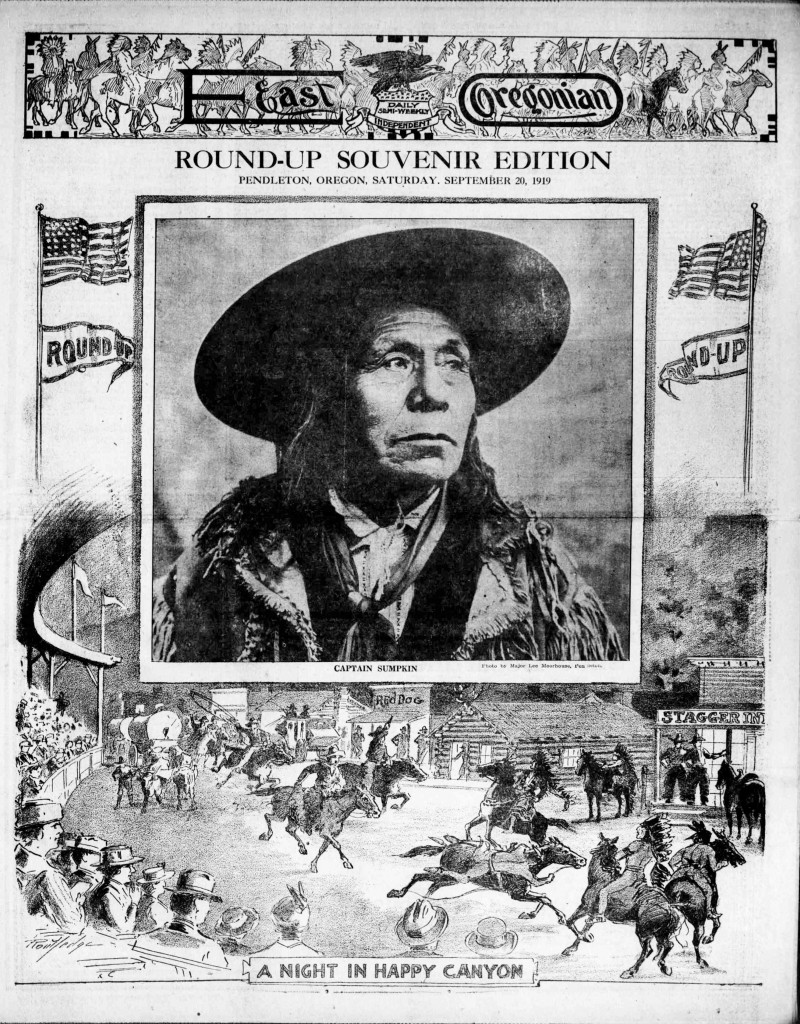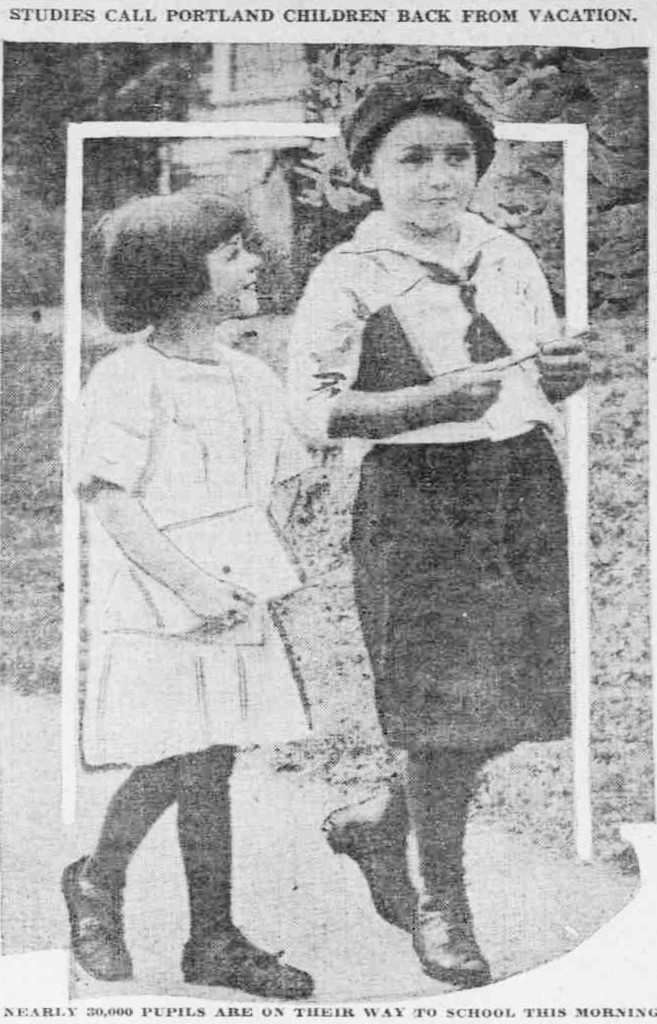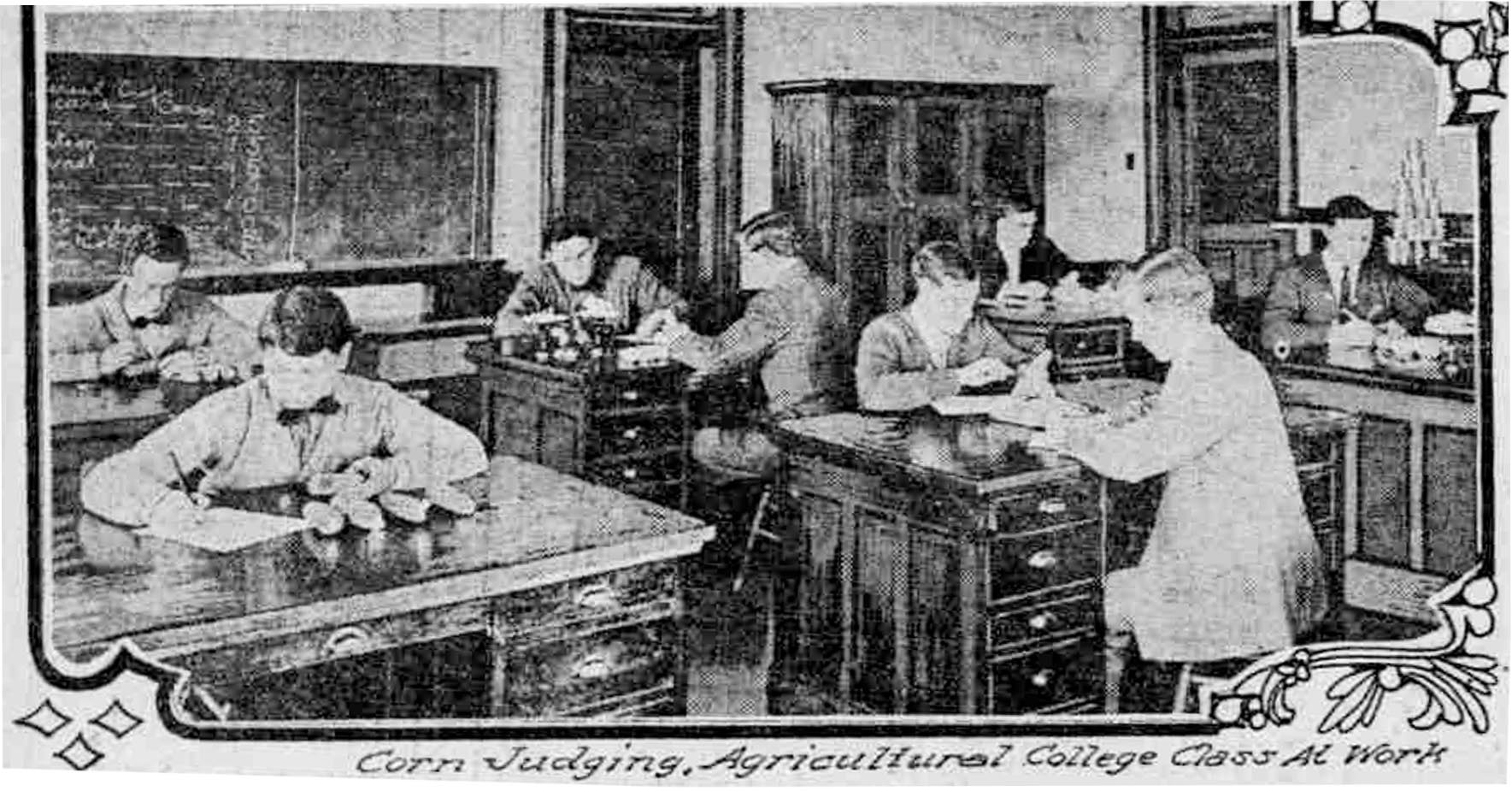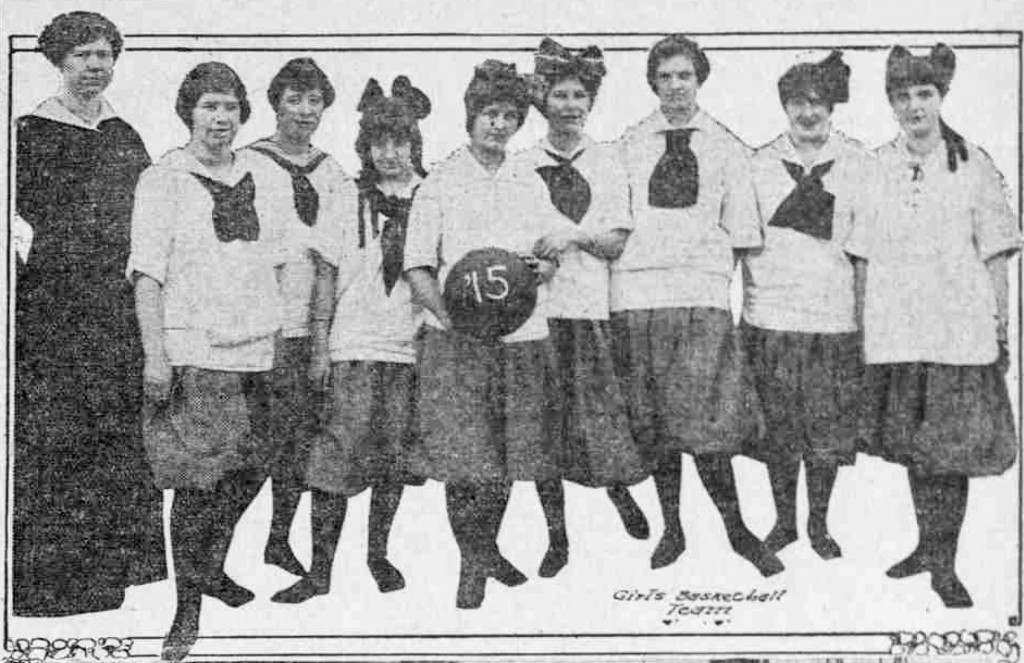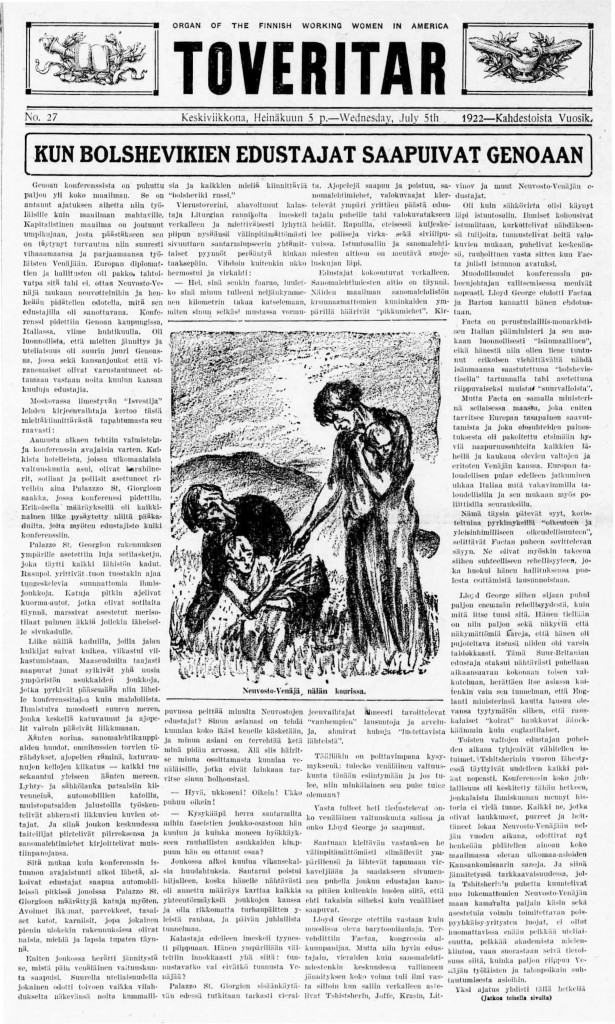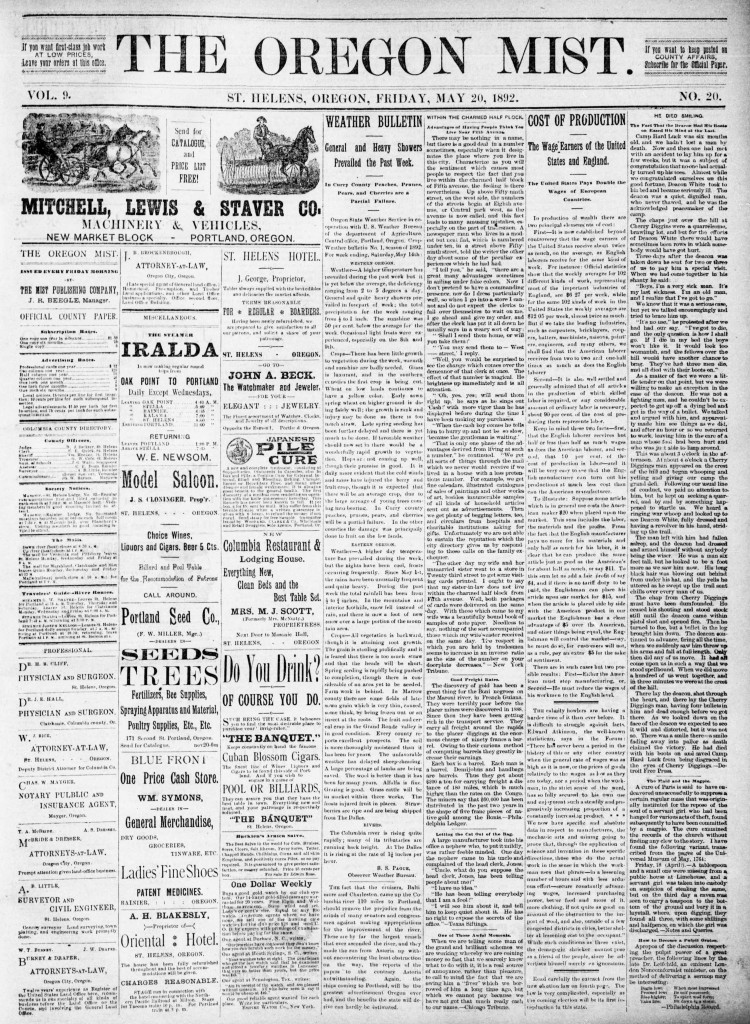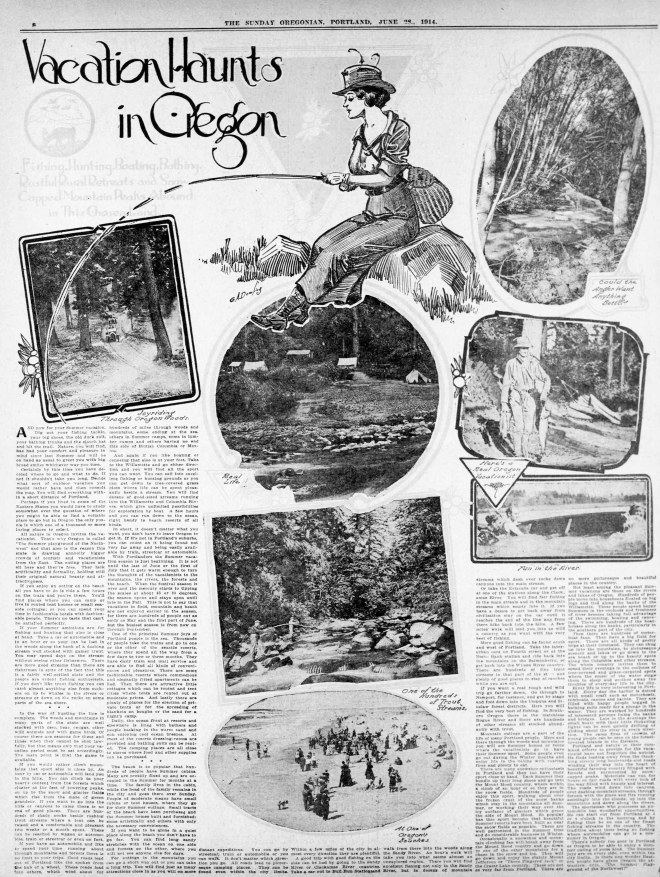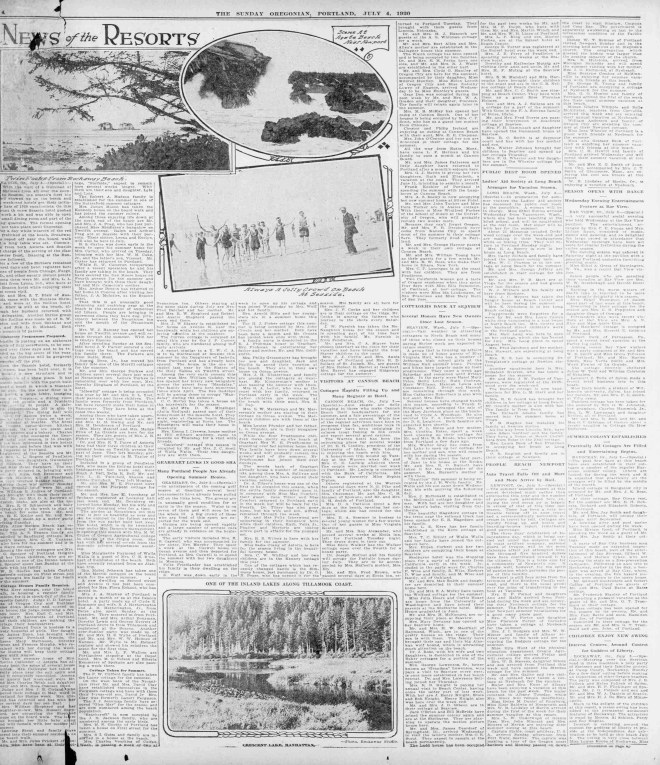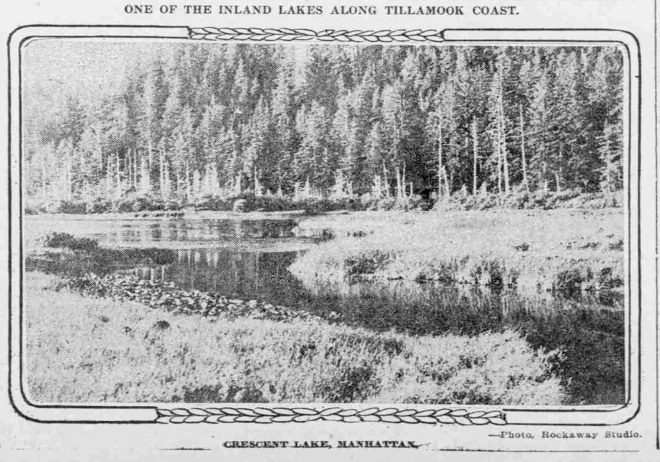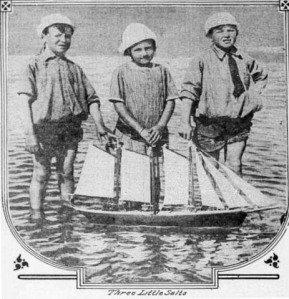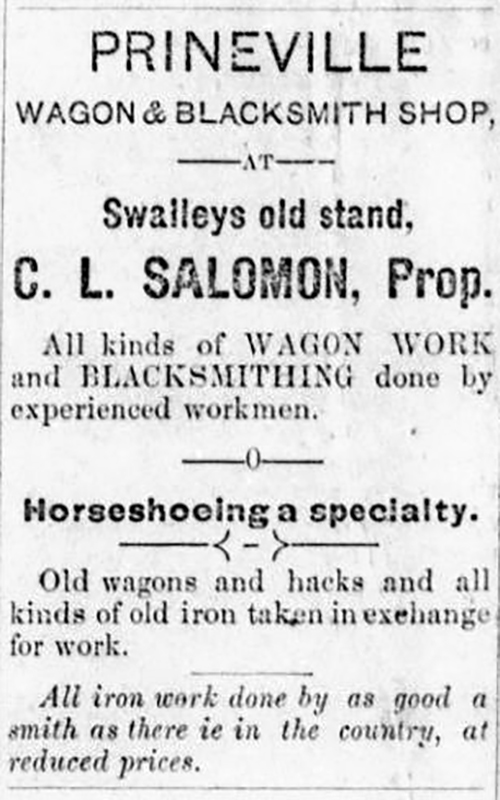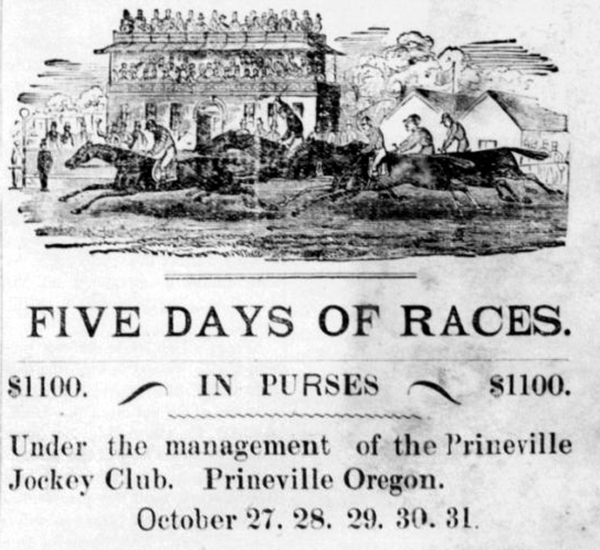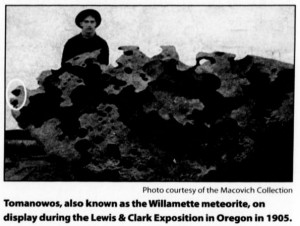With the familiar chill of early fall comes jack-o’-lanterns on front porches and paper cutouts of bats, black cats, and witches on broomsticks in the windows of homes and school buildings. Halloween is here once more, and the fun and oftentimes spooky traditions of the holiday as celebrated in the state of Oregon have been well documented in Historic Oregon Newspapers.
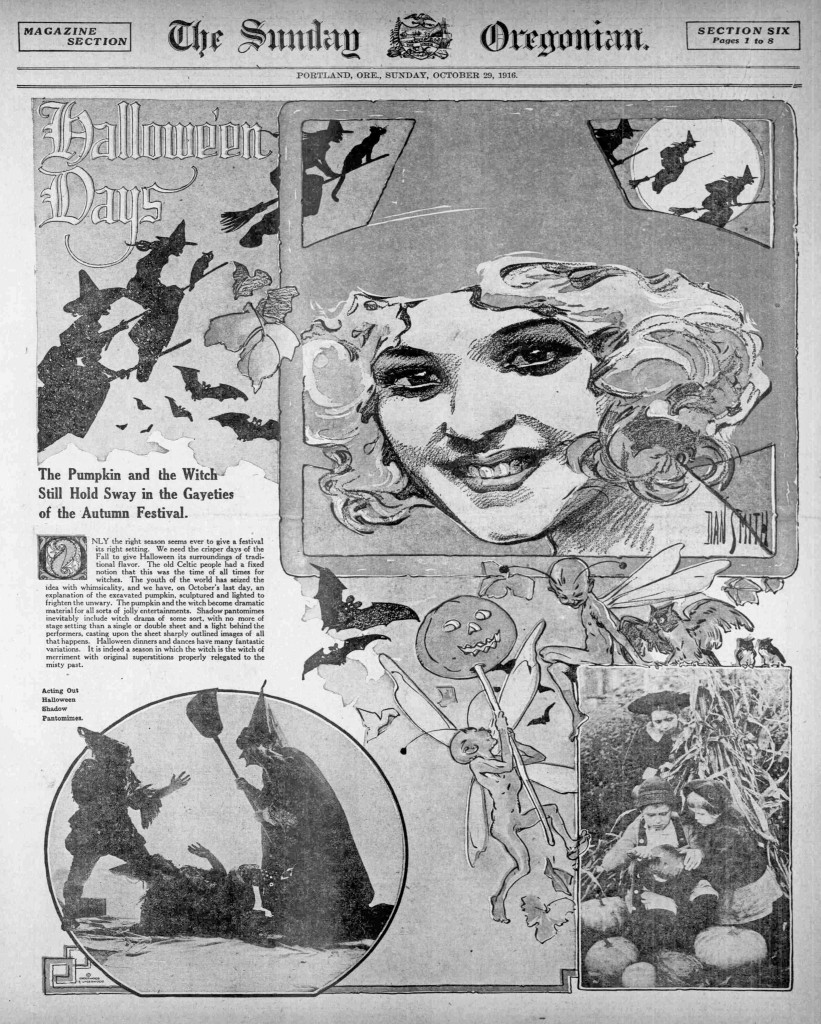
Sunday Oregonian. (Portland, Or.) October 29, 1916, Image 71. http://oregonnews.uoregon.edu/lccn/sn83045782/1916-10-29/ed-1/seq-71/
A yearly tradition that many look forward to is the Halloween party. The “Society ” page of the November 5, 1922, edition of the Sunday Oregonian detailed the numerous Halloween parties and dances held in posh Portland hotels and private homes. One such party was given in honor of “Miss Dora Gordon, a popular young Portland girl who is attending the University of Oregon.” The party took place at the “Torrey residence in Laurelhurst” and “was most attractively and appropriately decorated in the striking Halloween colors. Dancing and many original features were enjoyed. Refreshments were served around an artistic orange and black table.”
In Grand Ronde, Oregon, the “gymnasium was a place of confusion and merriment on last Monday evening, it being the occasion of an All Halloween social,” reported the November 4, 1910, edition of the Weekly Chemawa American. “Various amazing features were provided for the entertainment of young and old on this occasion. A couple of ‘spectres’ made their earthly appearance on this occasion, to the enjoyment of all. They were arrayed in the latest tailored white sheeting and cut quite a dash.”
Focusing specifically on the entertainment of the young on the festive occasion of Halloween, the Sunday Oregonian in its October 29, 1916, edition ran an article titled “Features for the Young People.” The article included the fiction story “Halloween Witches and Their Pranks” and presented helpful tips on “Fun for Halloweeners.”
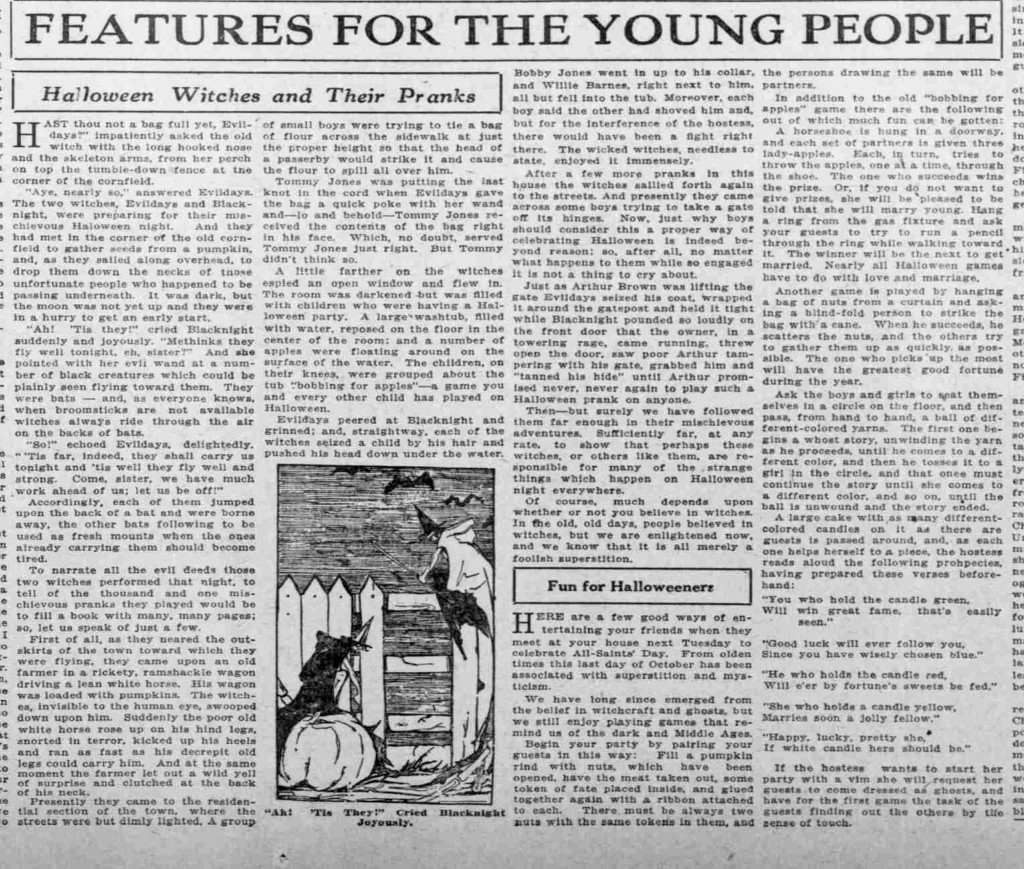
Sunday Oregonian. (Portland, Or.) October 29, 1916, Image 73. http://oregonnews.uoregon.edu/lccn/sn83045782/1916-10-29/ed-1/seq-73/
“Fun for Halloweeners” provided many ideas for games, “in addition to the old ‘bobbing for apples’ game,” which young people could play at a Halloween party. One of these Halloween games, “out of which much fun can be gotten,” involved a horseshoe:
A horseshoe is hung in a doorway, and each set of partners is given three lady-apples. Each, in turn, tries to throw the apples, one at a time, through the shoe. The one who succeeds wins the prize. Or, if you do not want to give prizes, she will be pleased to be told that she will marry young. Hang a ring from the gas fixture and ask your guests to try to run a pencil through the ring while walking toward it. The winner will be the next to get married. Nearly all Halloween games have to do with love and marriage.
For Halloween revelers not quite of marrying age, there was still fun to be had, typically at parties given by parents. The October 7, 1948, edition of the Heppner Gazette-Times came to the aid of Heppner, Oregon, parents faced with throwing a kids’ Halloween party. The newspaper stated the “setting for the party might be the backyard, a recreation room or the family living room. The boys and girls will have lots of fun planning the games and making the decorations. Simple-to-make decorations such as jack-o’-lanterns, black cats, balloons and orange and black crepe paper streamers make a fine background for a gathering of ghosts and goblins.”
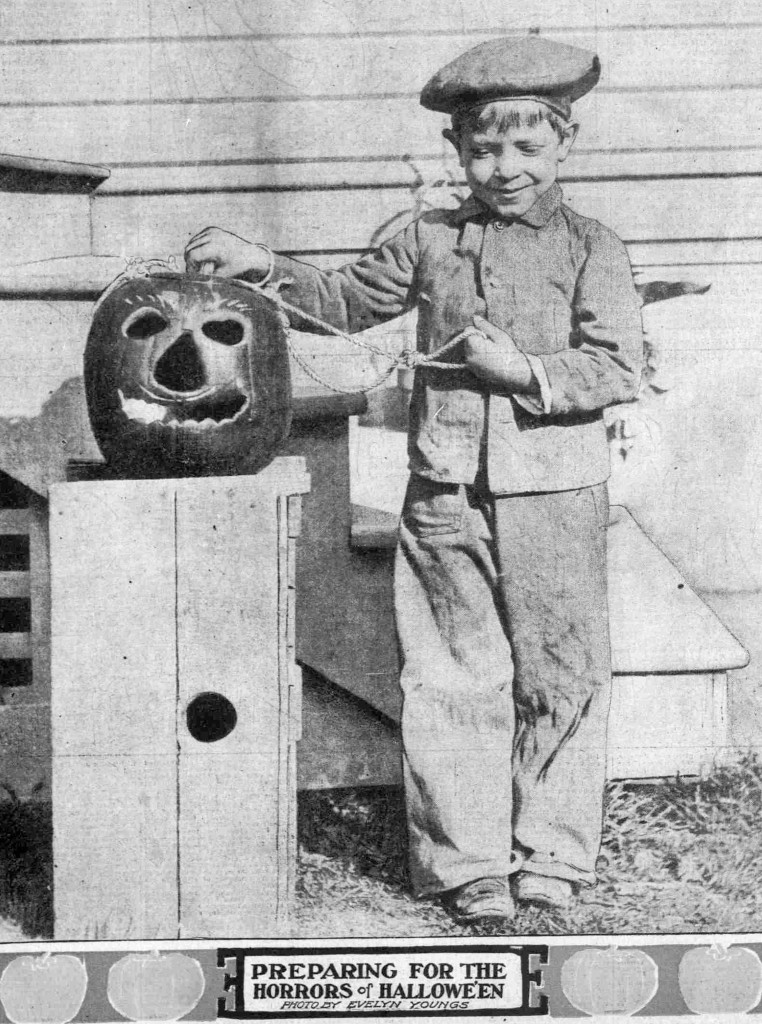
Sunday Oregonian. (Portland, Or.) October 25, 1908, Image 45. http://oregonnews.uoregon.edu/lccn/sn83045782/1908-10-25/ed-1/seq-45/
The Morning Enterprise, in the October 23, 1912, article “For the Children,” suggested parents have their children play the “lucky candle game” for Halloween: “For this game provide a large tub of water and small candles for those who wish to try their luck. The candles are mounted on bits of wood by means of a pin or thin nail driven through it. Each player then launches his little boat, and the candles are all lighted as quickly as possible. The owner of the candle that burns the longest will be the luckiest guest of the party. The good luck is supposed to remain with the fortunate winner for the ensuing year.” Hopefully, Oregon City parents who heeded the Morning Enterprise article had more than a few fortunate winners at their children’s Halloween parties.
As the sun sets October 31 and costumed revelers, young and old, fill streets and homes with Halloween cheer, take a page from Historic Oregon Newspapers and their coverage of spooky fun and frolic in decades past. Make sure party spots are “most attractively and appropriately decorated in the striking Halloween colors.” Serve refreshments “around an artistic orange and black table.” Play games “out of which much fun can be gotten.” And Happy Halloween!

